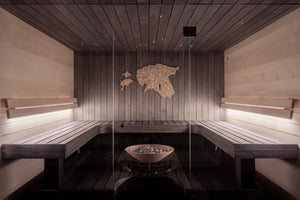How Long Should You Stay In a Sauna?
Key Takeaways:
-
Sauna use provides a host of benefits.
-
A lot of these benefits are due to the rise of core body temperature.
-
General recommendations are about 60 minutes weekly, broken up into 2-3 sessions.
-
Total weekly sauna use is generally more important than the duration of each session. Personal preference, along with proper hydration will decide between short and long sauna sessions.
If you're new to using a sauna, it is important to start small and increase time as you're able to handle it.
BEGINNER
Start with 5-10 minute sessions
Do this 3-7 times per week
If possible, start with lower temperatures
INTERMEDIATE
10-15 minute sessions
Do this 3-7 times per week
Aim to achieve 58 minutes weekly
ADVANCED
15-20 minute sessions
Do this as often as you like
58 minutes weekly
Try higher temperatures as tolerable
IDEAL:
15-20 minute sessions
58 minutes weekly
Split into 2-3 sessions
Sauna every day is great for health benefits
The goal is to achieve 58 minutes of weekly sauna use. Far infrared saunas generally have a cooler feeling air temperature, since they heat the body directly, rather than simply the air around you.
Far infrared saunas allow for you to have longer sauna sessions, unlocking even more sauna health benefits without as much frequency.
Research into the length of sauna sessions at high temperatures more so related to the total time within a week, rather than simply a time per sauna session. A general rule is to achieve 1 hour of sauna use per week. It is better and safer to not do this all at once, instead get into a regular sauna routine, by splitting this up into 2-3 sauna sessions per week. This breaks down to about a 20-30 minute sauna session each time.
What Sauna Temperature is Right For You?
Deciding on the duration of your sauna experience will be dependent on the intensity or temperature of the sauna that you will use. This is why having an at home sauna is very valuable.
Traditional Sauna Temperature
Beginner: 150-175°F
Intermediate: 175°-190°F
Advanced: 190°F+
Far Infrared Sauna Temperature
Beginner: 120-150°F
Intermediate: 150°-1175°F
Advanced: 175°F+
Steam Room Temperature
All Levels: 100-120°F
Far Infrared Versus Traditional Sauna
Far infrared saunas offer a heating experience, different from the traditional variety. Let’s talk about the benefits of far infrared and classic sauna options.
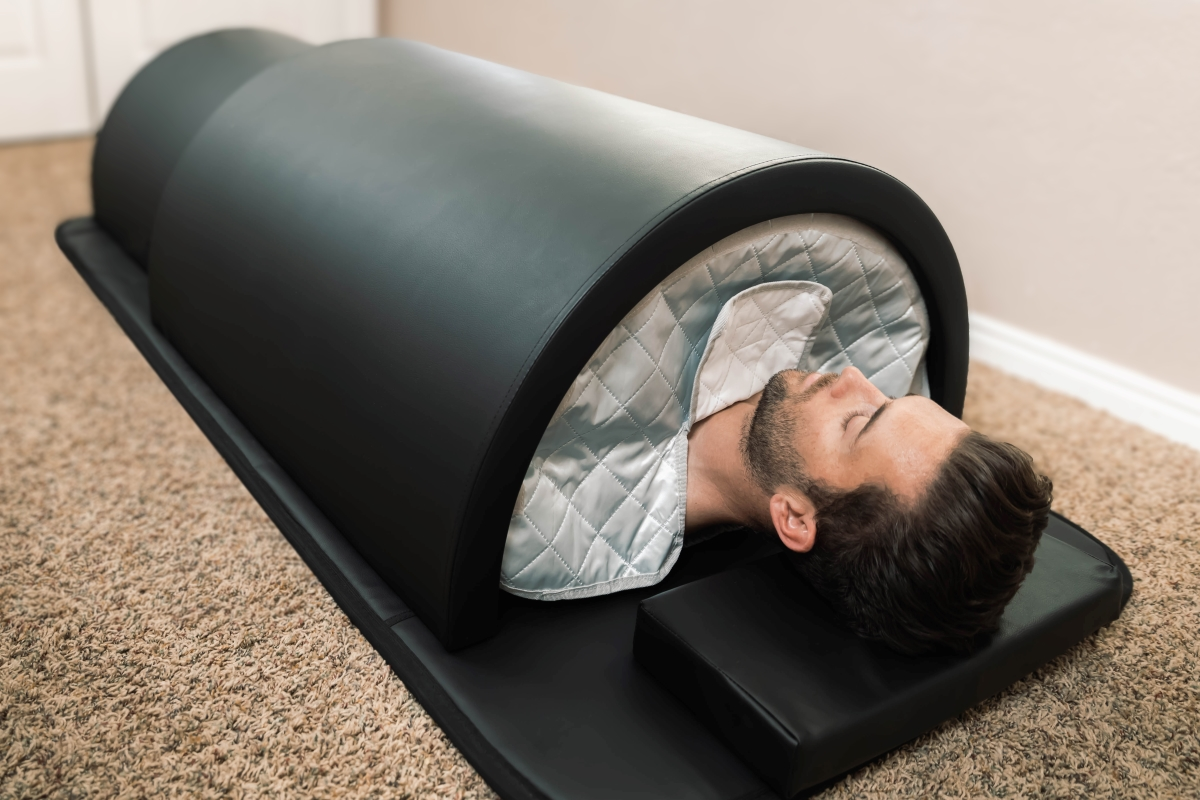
The Benefits of a Far Infrared Sauna include:
Less heat on the body directly
Easy to use at home and in other locations
Heating the body rather than just the air around you
Deep healing of muscle and joint pain
Reduced symptoms of arthritis
Higher degree of immune system strength
Increased blood flow
Dry heat
Increased core temperature
Many other health benefits from frequent sauna exposure
These are an improvement from traditional saunas.
Thanks to the lower heat and heating method, far infrared saunas can operate in more spots than the traditional sauna. For example, our far infrared saunas offer portability without excessive heat, making it possible to enjoy a relaxing experience without sweating to death.
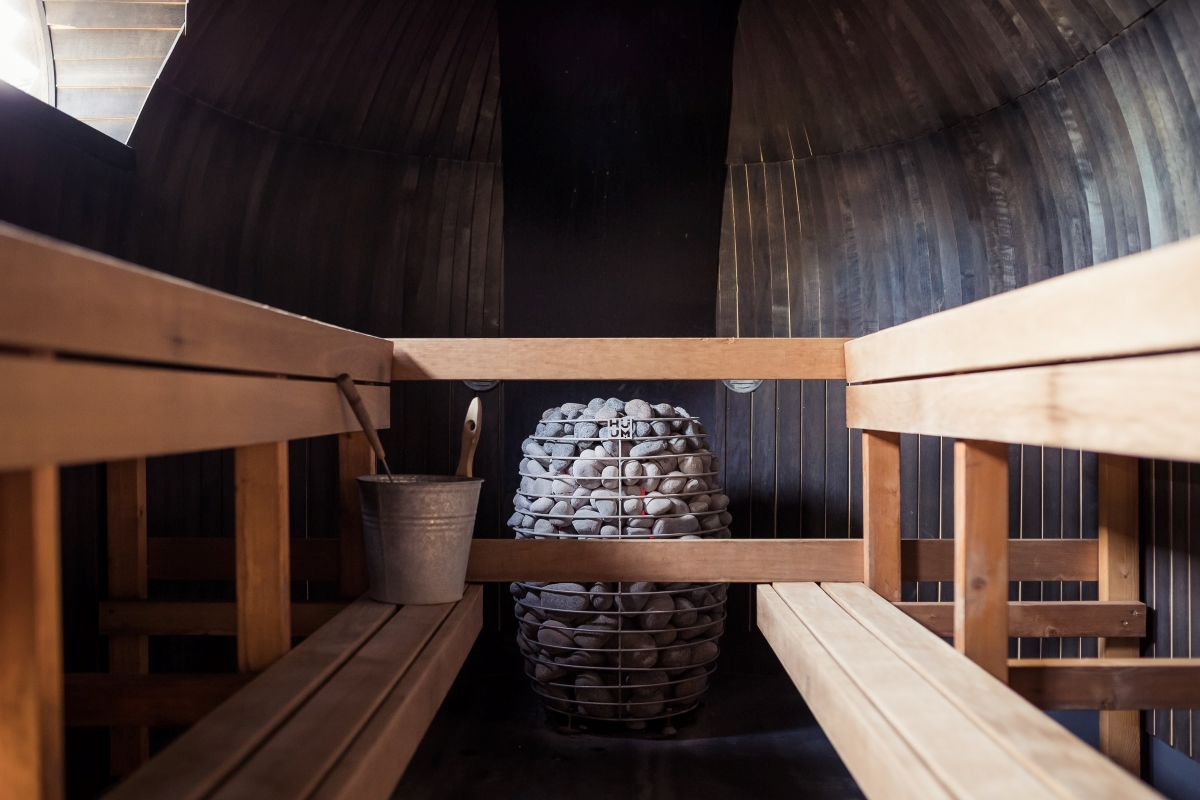
The Benefits of a Traditional Sauna Include:
Small amounts of detoxification through sweating
Higher felt temperature
Increased blood flow
Increased core temperature
Dry heat
The idea is that you can achieve benefits with both traditional and far infrared saunas; however, generally, far infrared sauna sessions are going to be more pleasant and beneficial because of far infrared saunas ability to penetrate deeply into the body directly, unlocking a host of benefits.
Finnish sauna culture has been using traditional wet saunas for centuries that use hot sauna rocks to make regular sauna bathing a very normal activity. This truly is the most pure form of sauna.
Is 20 Minutes In An Infrared Sauna Enough?
Infrared sauna sessions lasting of 20 minutes are surely enough to achieve many health benefits. In a traditional, sauna room this may be harder to achieve due to the high temperature of the dry sauna air around you, this is why it is easier to get sauna benefits from infrared.
If you choose the path of shorter sauna sessions, try and keep the heat as high as you can handle. The goal is to dramatically increase core body temperature to drive improve circulation throughout the body.
What Benefits of Sauna Use Can I Expect From 20 Minute Sessions?
Anti-aging
Enhanced cardiovascular health
Improved skin health
Reduced chronic pain
Improved cognitive function
Reduced stress
Mental Clarity
Consistent sauna exposure of 20 minutes can dramatically improve health. 20 minute sauna sessions 3-5 times a week can contribute to muscle soreness, better workout recovery, reducing inflammation along with overall systemic inflammation.
Skin benefits with sauna use generally arise with short sessions as well, it doesn't take a lot to achieve them. As pores open and you begin to sweat, circulation to your skin dramatically increases.
This allows proper nutrition's to flow to areas of the skin that need it most. This can help skin conditions. This can even have anti-aging effects on the skin allowing for a more youthful look of your skin.

How Long Does It Take To See Results From Sauna?
Far Infrared Sauna
Far infrared saunas take a bit longer for you to begin sweating, roughly 10-15 minutes, but you generally sweat more once you have started.
Some of the health benefits of frequent far infrared sauna use include assistance with headaches, lowered high blood pressure, and help with dementia and Alzheimer’s. It also assists in weight loss.
Traditional Sauna
A traditional sauna is much hotter to the skin and sometimes is a wet sauna, meaning you may notice you'll sweat much quicker, within 5 minutes, yet the hot air on your body and face may make it very hard to do for long periods of time.
Traditional saunas offer similar benefits to a far infrared sauna; however, they're much harder to stay in for the amount of time needed to achieve health benefits.
Far Infrared is More Effective
Studies thus far show the far infrared sauna’s heat presses deeper below the surface of the skin than the traditional sauna. Since people can stay inside for longer, the benefits are more complex and occur much faster than the counterpart.
Is Longer Sauna Exposure Better?
Longer exposure of sauna sessions have been found to have dramatic positive effects on health. Some interesting studies have tested multiple sessions of 30 minutes back to back.
Each of these private sauna sessions included 5 minute cooling breaks, allowing you to also stay hydrated. This were shown to dramatically increase hormone secretion of important hormones such as human growth hormone.
Important Things to Consider With Long Sauna Exposure
The process of using a sauna and bathing in longer sessions can contribute to dehydration. It is critical that you properly hydrate before each session and take any necessary cool down breaks. These breaks can help you use the sauna longer and increase output of benefits. So remember, drink plenty of water.
Sauna Frequency
Less frequent sauna exposure with increased duration can rival the benefits of frequent, shorter sauna sessions.
If you're someone who doesn't have much time in their daily routine, but can take a day or two each week to have longer sessions, you can still gain tons of benefit from that. This is mostly personal preference.
Generally it's suggested to try shorter, more frequent sessions due to the lowered risk of dehydration.
Consult a Healthcare Provider
When attempting longer sauna sessions it is important to consult your healthcare provider and note any preexisting conditions you may have to assure that this process will be safe and healthy for you.
Find What Works Best For You
Just like any form of exercise, workout or method of alternative medicine, personal preference plays a large role.
If you are new to sauna use it is recommendation to start at lower temperatures and shorter sessions. This is to ensure you can stay properly hydrated and relax without feeling uncomfortable.
You do gain a heat tolerance as frequent sauna bathing takes place. This will allow you to work up to longer and hotter sauna sessions, gaining even better results.
Again, far infrared saunas allow you to more comfortably higher temperatures for longer periods of time simply because the air around you isn't quite as hot.
Which Type of Sauna is Best For Me?
Infrared is the most effective and easiest to tolerate
Infrared is far more portable and easier to have within a home
Wet saunas can accumulate moisture which needs to be regulated
Wet saunas do provide some benefits to the respiratory system
Infrared saunas penetrate far deeper into the skin's surface
Infrared Saunas

Infrared saunas allow you to get the most out of your time. They directly heat the body, achieving higher core body temperatures, which having a more pleasant dry heat around the body.
The Infrared rays penetrate much deeper into the skin, allowing for better recovery from issues such as inflammation and muscle soreness. Walk in Infrared Saunas are quite large, and often require lots of room converted into an at-home sauna.
Traditional Finnish Saunas

For the people that love the feeling of extremely hot air, this traditional heat therapy, may be the choice for you. A traditional sauna bath uses hot rocks and water to create a very hot and humid environment. This heats the air around you to extreme temperatures that increase your core temperature. Some people do feel somewhat Claustrophic due to this, and may need to get out from breathing in such hot air.
Portable Infrared Saunas
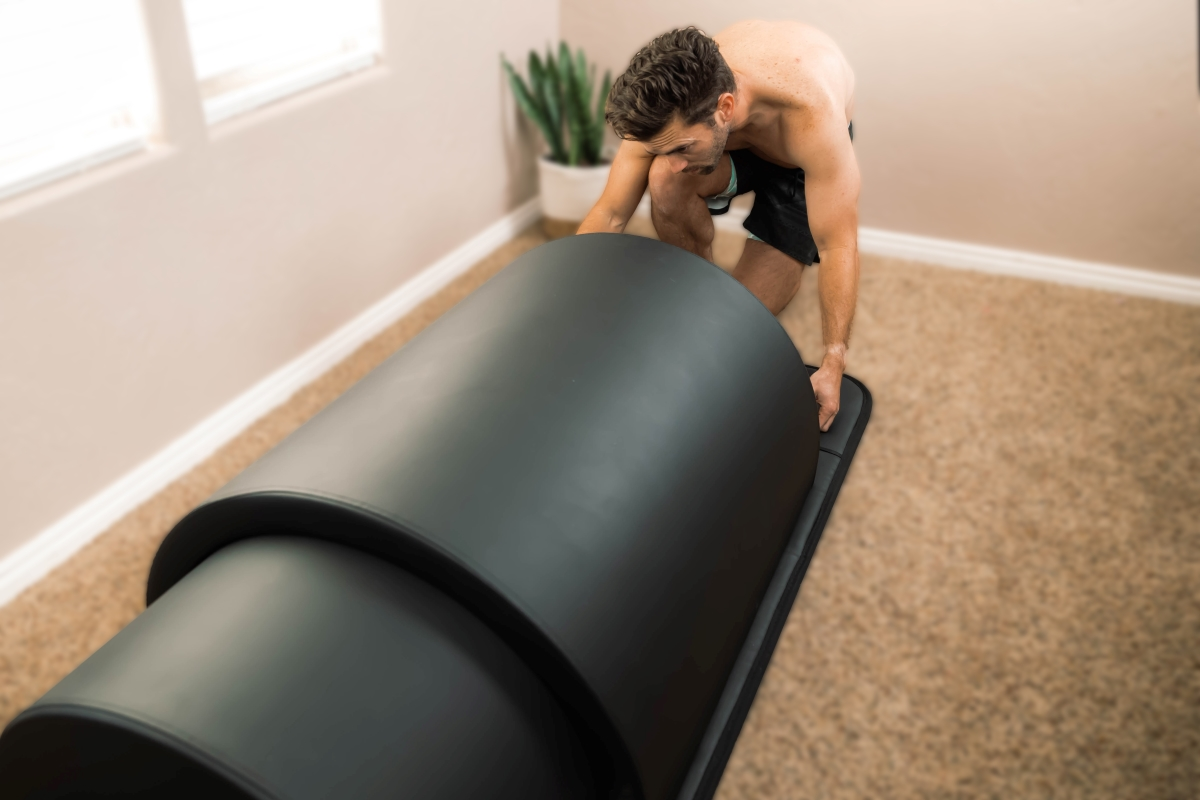
Portable infrared saunas have been growing in popularity as of recent. These are personal saunas that allow you to have full portability, while still achieving full benefits of a larger, walk in style sauna.
These also are able to store away, so that you don't have to worry about taking up permanent space within your home.
The maintenance and cleaning involved in these is also much less. Consider a portable infrared sauna if you're someone who doesn't want to sacrifice tons of space.
Sauna Blankets
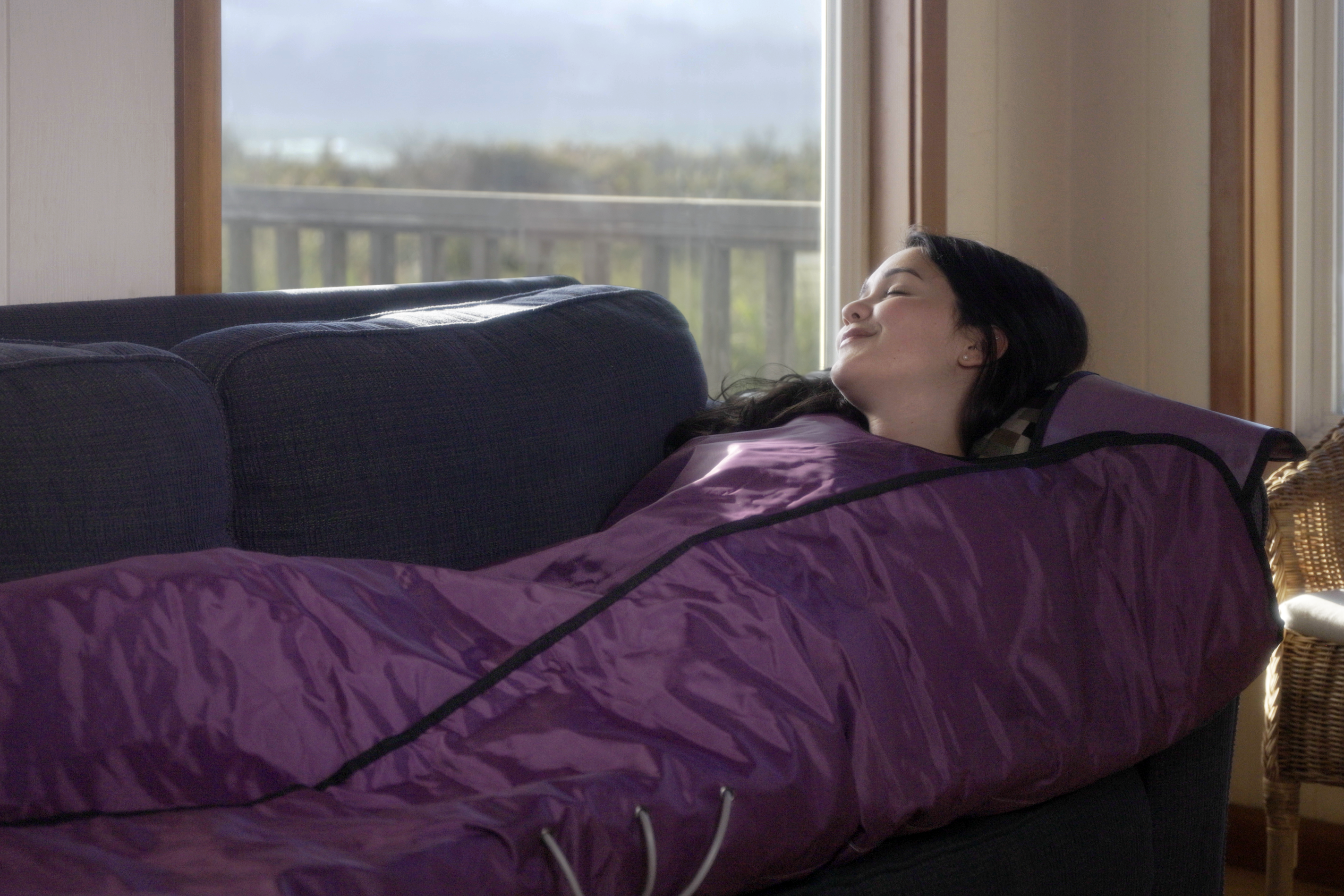
Sauna blankets are even more portable than dome saunas. These are similar to heated blankets, but use far infrared to directly heat and heal the body. These can store away in something as small as a cabinet because they're able to fold into a small structure.
Sauna blankets are also the most affordable sauna option. The downside of these is generally they don't get quite as hot and some people prefer to not have any sort of material touching them while sweating.
Is It Better To Sauna in the Morning or Night?
In a sauna, it’s best to go with the extremes of the day for the best experience. With these you can leverage the benefits of the sauna more toward for advantage.
Use your far infrared sauna early in the morning to start the day feeling refreshed and ready. Or you can use it late at night, after a hard day’s work, and before you head to sleep. This allows you to utilize the cool down period to relax the entire body and prepare for optimal sleep.
If neither of these times works, there is no harm in utilizing your infrared sauna any time of the day. It doesn’t take long to get everything prepared and in working order for use, no matter when you decide to hop in.
Does Length of Sauna Use Make a Big Difference?
In all, cumulative sauna use among a weekly basis is the most important. It is important to center your daily sauna use around your schedule.
Some people truly do love to sauna every single day, in this case it would be recommended to do shorter sessions. If you're someone who wants to aim for around 60 minutes of sauna use per week with only 1 or 2 sessions, you will need to prepare your body, give cooldown breaks and properly hydrate.


